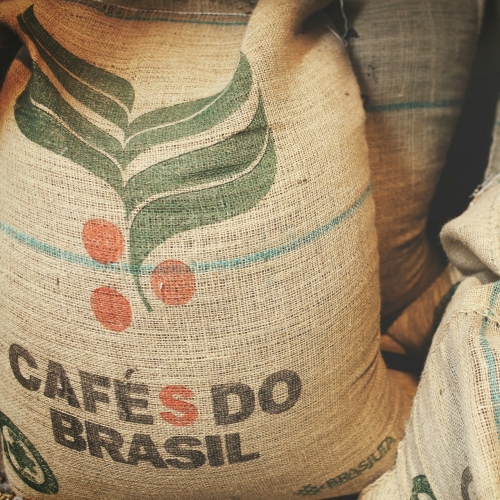
This business trades in and repurposes the hessian / burlap / jute coffee sacks that coffee beans are transported in.
Burlap / hessian / jute bags are the default choice for shipping coffee around the world. Green coffee beans are exported from farms in these bags to roasters who then package the roasted coffee bean in vacuum-sealed bags. This hessian bags (same material used to make gunny sacks). It is breathable and so resists condensation and associated spoilage of contents. These bags can also be repurposed. This businesses acquires these bags from roasters and sell them to people who will reuse and repurpose them as well as do the repurposing themselves.

The coffee sack repurposing business involves the creative and sustainable reuse of used or surplus coffee sacks, transforming them into various products beyond their original purpose of transporting coffee beans. This practice aligns with the principles of upcycling, recycling, and sustainability, contributing to reduced waste and the creation of unique, eco-friendly goods. The coffee sack repurposing business often involves artisans, crafters, and entrepreneurs who see the potential in turning these sacks into functional and decorative items. It is used for a variety of decor or craft projects, for gardening(biodegradable weed barrier), an outdoor table cloth, packing protection etc.
Selling
Selling is a bit trickier as the bag itself is not exactly an in-demand product locally, but it is something that can be acquired fairly cheaply if you can get a contact in the coffee trading business. I've sold batches to guys who are using it in their man caves. The country of origin printed on it gives it an exotic look. This product needs to be sold to a craft or gardening channel, which is the most popular local use. Possibly landscaping as well.
When I look at repurposing, I prefer a material that can produce a high-value item. Same for normal manufacturing; the labour part must add a lot of monetary value. When it comes to hardwearing repurposed materials like banner canvas, I like to produce items like FishFinger-style sling bags, but some of these material fibers are too "hairy" and produce quite a bit of lint. You could make tote bags, but then they need a lining as the lint might rub off on the contents.
Business Model
There are two business models, and they are no different from the trading of the main commodity: source and sell or source, process, and sell.
Collection and Sourcing: Businesses in this sector often source used coffee sacks from coffee producers, roasters, or importers. These sacks may have completed their primary role in transporting coffee beans and are then collected for repurposing.
Cleaning and Preparation: Once collected, the coffee sacks need to be cleaned and prepared for reuse. This may involve removing any remnants of coffee beans, dirt, or stains. Some businesses maintain the original markings on the sacks, including logos and labels, as part of the design.
Product Range: Coffee sack repurposing businesses create a variety of products, ranging from functional items to decorative pieces. Common products include tote bags, purses, aprons, cushions, rugs, wall hangings, and more. The possibilities are extensive, limited only by creativity and craftsmanship.
Customisation: Customisation is often a feature of the coffee sack repurposing business. Customers may have the option to request specific designs, sizes, or even incorporate their own coffee sacks into bespoke creations.
Coffee Trading


